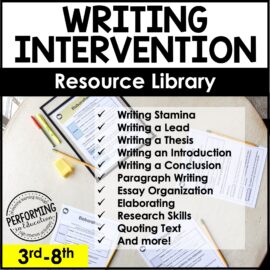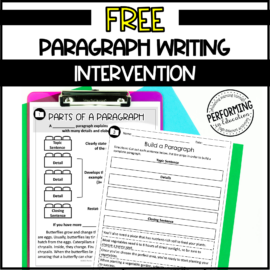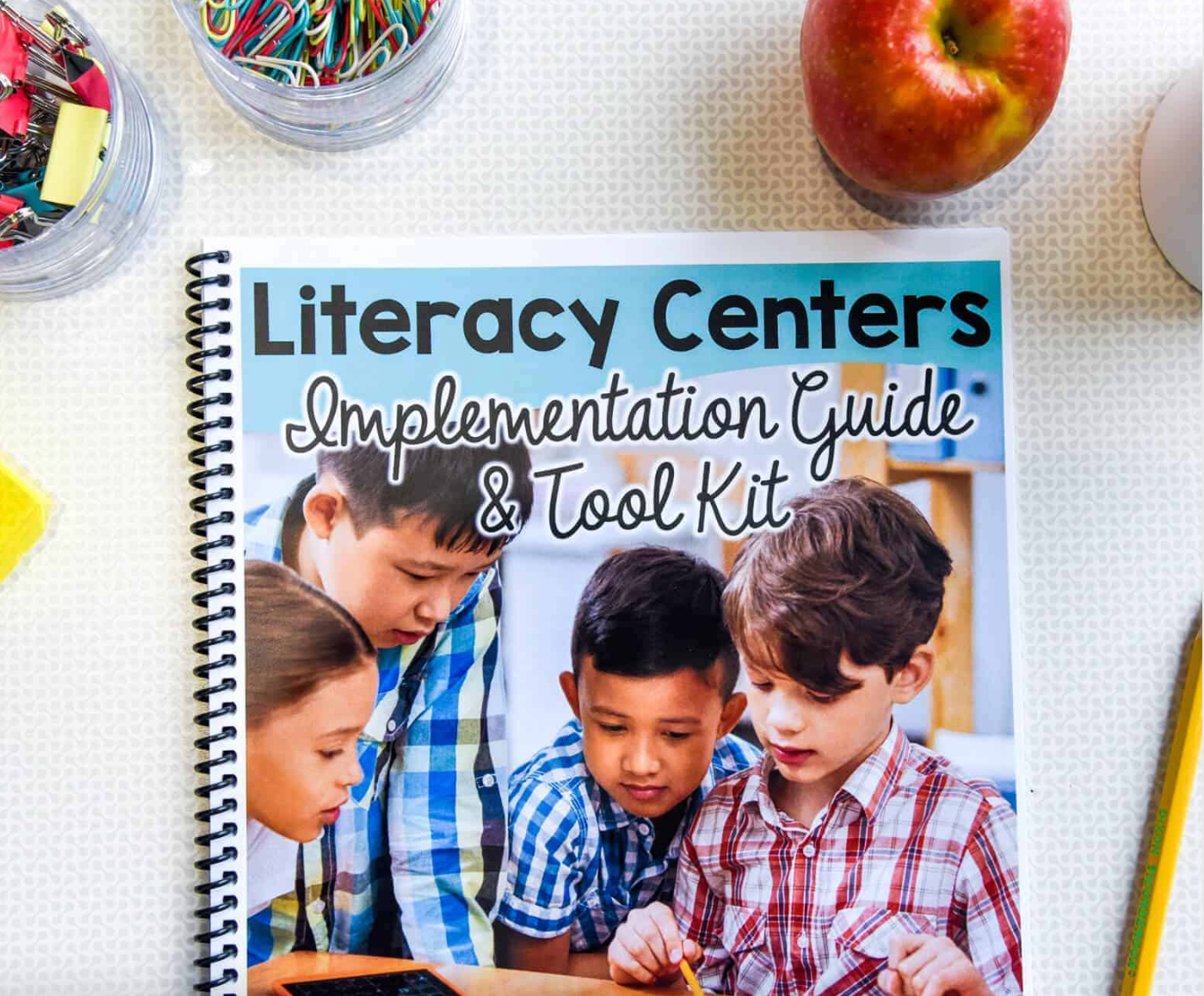Every year, I seem to have more and more students who can’t write proper paragraphs. So, I’m going to share the seven lessons I use to reteach paragraph writing. You can use all seven lessons or pick and choose the ones your students need the most.
At the start of the year, I like to give students a writing assessment to help identify gaps for each student and the class’s gaps as a whole. As a result, I often reteach paragraph writing as a whole group at the beginning of the year.
These seven lessons are great to work through completely, or you can choose only a few if all the lessons aren’t needed. For example, you can use some lessons during the first week as a refresher for students. Or, you can use them in small group for specific students who are struggling. So, there are a lot of different ways you can use these.
Paragraph structure interventions
The seven lessons I use are in the Simplify Writing Intervention Library. I usually use these activities for 3rd through 8th graders as an intervention since it’s something they should already know how to do. I consider anything I need to teach that isn’t on grade level an intervention, whether it’s to the entire class or just a small group of students.
Overall, if your students are really struggling, I recommend doing all seven lessons as a whole class. It’s not going to be bad for students who already understand to get a little bit of a reteach along with the others. However, if I only have five or six students struggling, I use these lessons for small group.
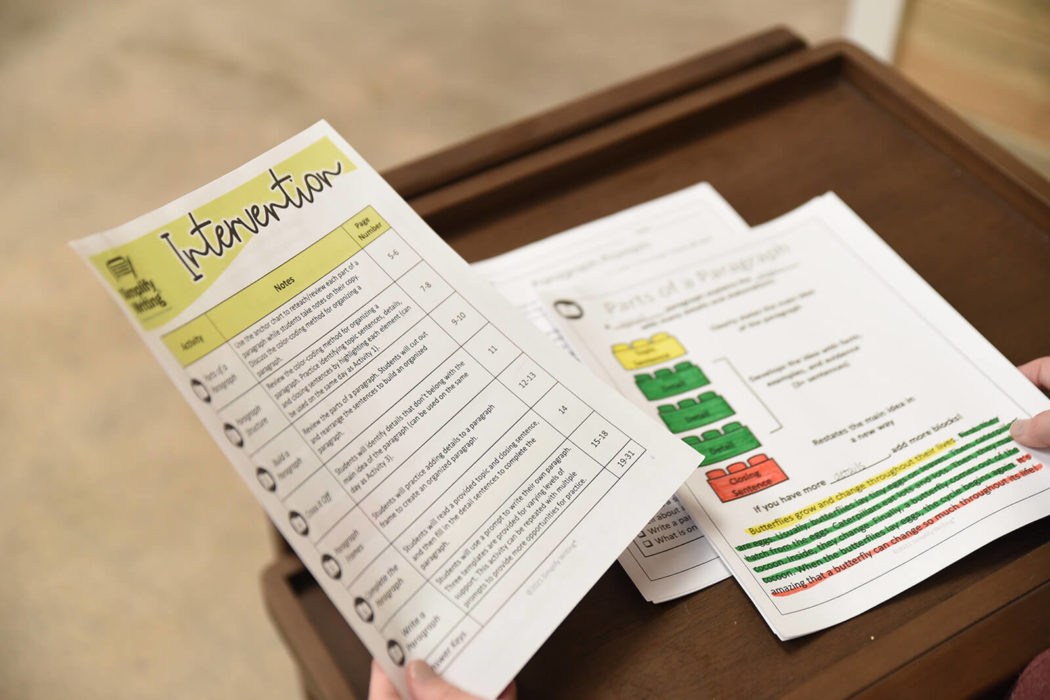
1. Parts of a paragraph
The first lesson goes back to the basics of labeling a paragraph. I use anchor charts to reteach or review each part of the paragraph while students take notes. This one is easy to do as an entire class or in small group settings. Students are focused on labeling the parts of a paragraph.
2. Paragraph structure
In lesson two, you use the same structure as the first lesson. This activity continues to have students label the parts of a paragraph.
3. Building a paragraph
Lesson three is very hands-on. Not only are we reviewing the parts of a paragraph, but we make it tactile and include cutting and rearranging the pieces. This activity helps them put everything together and makes their brains work a little differently.
4. Cross it off
You can skip lesson four if you are only looking at building paragraph organization. However, I find this lesson to be one of my favorites. Students go through the text and remove things that don’t belong in the paragraph.
One issue my students run into is putting things in paragraphs that don’t belong. So this lesson also sets them up for success in the revision process. I like to use this lesson, but you can skip this one if you have limited time or are only focused on organizational structure.
5. Paragraph frames
I love lesson five because it makes it easy for students to start writing, especially if they are hesitant to write. I also use this a lot with my English language learners. Students practice adding details to a paragraph frame during this lesson to create an organized paragraph. We use a lot of sentence frames and paragraph frames.
6. Complete the paragraph
In lesson six, students are getting scaffolded practice again and given the first and last sentences of the paragraph. Then, they are asked to fill in the details of the sentence. This way, they don’t have to come up with the topic sentence and closing sentence, which can be tricky, but they can see what it looks like.
I like this one because it helps students flow into the next couple of lessons where they really practice doing all three pieces together.
7. Paragraph practice
Lesson seven isn’t necessarily one lesson. You can turn it into however many lessons you need for your students to really get it.
This lesson includes practice prompts that allow students to go through and check off whichever prompt they want to use. There are prompts for informational, explanatory, opinion, and narrative writing. The prompts allow students to choose whatever they are most confident in writing. You can also have them do more than one paragraph or one every day for a week. Again, you can really customize this to the needs of your students.
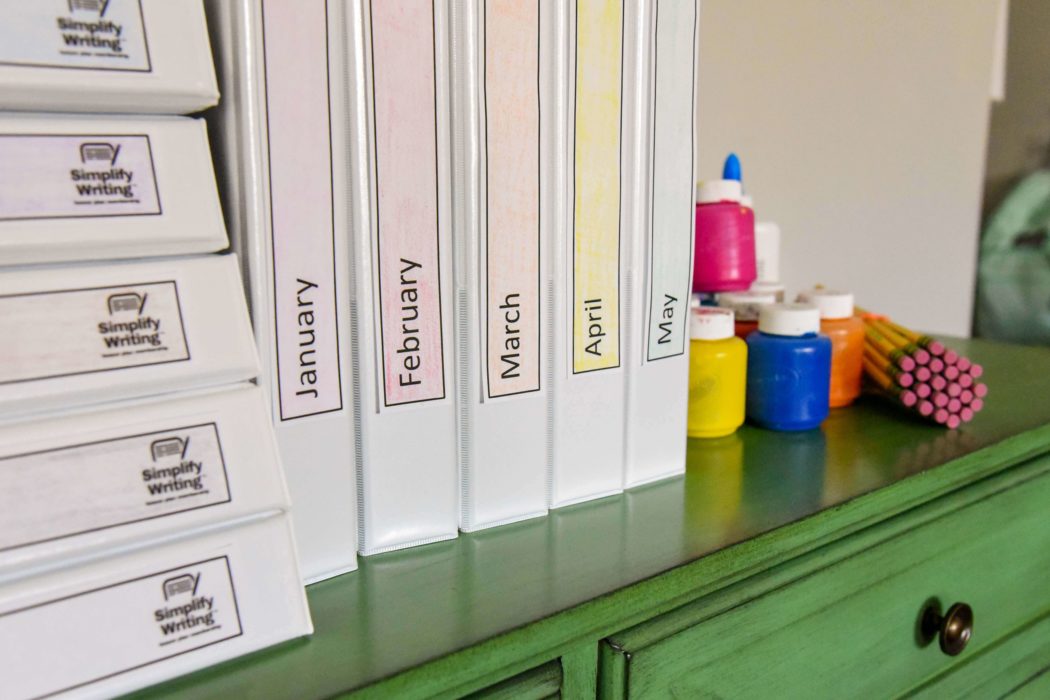
How to reteach paragraph writing
Some students will only need the first few lessons as a quick refresher. But, you may find, especially if you’re working with 3rd or 4th-grade students who haven’t been writing paragraphs for as long, that they may need more paragraph practice.
Remember to have your students highlight during practice the same way they do in the first few lessons. That way, they can easily show that they have included the different pieces of the paragraph. By doing this, you help the students engrain the parts of a paragraph in their minds before they start writing entire pieces.
Have students keep these completed lessons in their writing folder or binder where they can easily find them. Or, you can have an anchor chart in your classroom that remains permanently. Then, anytime a student struggles with paragraph writing, you can refer back to it.
Also, if you’re interested in seeing all the intervention resources I have available, you can find them in Simplify Writing. There are intervention lessons for many different topics such as complete sentences, stamina, introductions and conclusions, elaboration, language and vocabulary, and conventions. We are adding more throughout the year. You can get all the details on how to get access to Simplify Writing here.
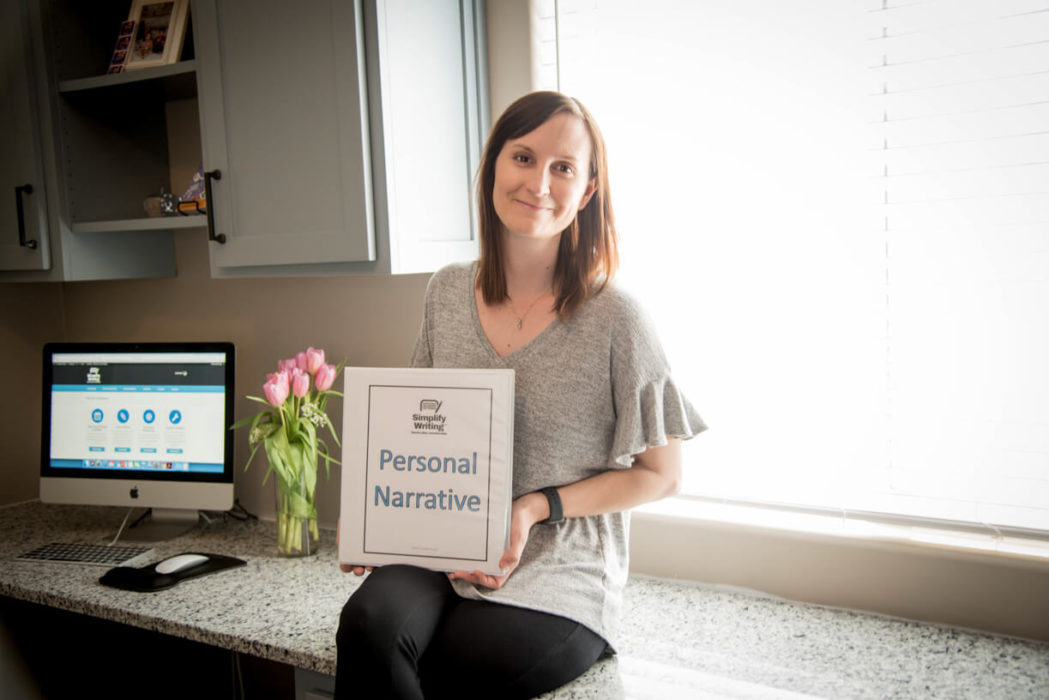
If you haven’t already found me on YouTube, I invite you to subscribe to my channel here. I put out new videos and free resources weekly.
